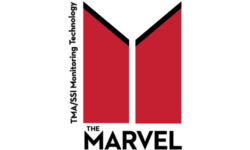Everything Old Is New Again: Why IoT Actually Relies on Old Technology
Without technology like RFID, analog sensors and 8-bit microprocessors, the IoT wouldn’t be what it is today.

Sometimes you can't have new technology without utilizing old technology.
Typically, when we think of the Internet of Things, we think of new, exciting and modern technologies. After all, what's more "the future is here" than using your smartphone to tell your coffee maker to start brewing your morning cup o' joe without even getting out of bed?
Thanks to the IoT, we can control virtually everything in our homes from anywhere in the world, setting the right temperatures, locking and unlocking doors and even keeping an eye on everything via internet-connected cameras.
Yet while all this technology might feel like something out of a sci-fi movie from 30 years ago, the secret of the IoT is that it actually relies on "old" technology that may have been available 10, 20, even 30 years ago.
Without technology like RFID, analog sensors and 8-bit microprocessors, the IoT wouldn't be what it is today.
RFID
In the early 2000s, many tech experts believed that Radio Frequency Identification was going to be the future of technology. Essentially a form of a bar code equipped with radio connectivity, RFID tags placed on items allowed readers to locate and identify items in mass quantities.
The applications for RFID were seemingly endless, but the primary use seemed to be in retail. Inventory equipped with RFID tags could track items throughout the distribution and sales process, reducing costs and in some cases, such as the pharmaceutical industry, preventing dangerous tampering with items.
Although RFID didn't become the dominant force that some expected it to, it has become an integral part of the IoT. At the risk of oversimplification, the very foundation of the IoT is the idea of items communicating with each other via radio. Engineers have found ways to incorporate RFID into new items to easily and unobtrusively provide additional functionality into everyday items, while also incorporating tracking mechanisms to gather additional data – and improve security.
READ: How to Use a Tesla to Control Home Automation
Disney, for instance, has been on the cutting edge of this technology for several years now. Not only do theme park guests receive "Magic Bands" that incorporate RFID technology to serve as park admission tickets and hotel room keys, the company is also experimenting with RFID that can track how individuals interact with different objects.
The data gathered via this tracking not only provides greater insight into consumer behaviors, but also has the potential to enhance how people work and play.
RFID does seem to have the most potential when it comes to data gathering, which is a vital part of the IoT's ability to function. This is also the case with analog sensors.
Analog Technology
When you hear the world "analog" you probably think "old-fashioned" or outdated. Modern society has come to think of digital as being the gold standard, with everything better in digital format.
While digital is certainly common, what few realize is that in many cases, digital wouldn't exist without analog. Most IoT devices rely on applications that collect and process environmental data, which then provides insights or triggers a reaction.
For instance, your home thermostat may be set to turn on the air conditioner when the inside temperature reaches 75 degrees. Without an analog sensor to monitor the temperature, that function would be impossible.
Most connected devices rely on some type of sensor technology, as well as analog-to-digital converters to function. These sensors are more accurate and flexible than their digital counterparts and ensure a better user experience.
8-Bit Processing
Finally, speaking of user experience, you might be surprised that anything still uses 8-bit technology. Most of what you see on the market today touts a minimum of 32-bit technology, and anyone using less than that most likely must install a 16-bit emulator or similar device to ensure proper functioning.
However, the IoT is spurring a resurgence of 8-bit technology, primarily due to size, cost and power constraints. IoT engineers are challenged to develop devices that have the necessary capabilities, but are not so powerful that they cost too much and use too much power.
Older 8-bit technology fits the bill in most cases, offering the right balance. Of course, it does require a redevelopment of some skills to work with older technology, but given the rapid growth of the IoT, that doesn't appear to be an issue.
So, while it might be surprising to see terms like 8-bit processing and analog thrown about in IoT development, existing technology is the foundation of these modern devices. What's to come is impossible to say, but for now, "out of date" seems to be just what the IoT needs.
Dan Simmons is an electrical engineer working with Microchip Technology, Inc., a provider of micro controller and analog semiconductors. http://www.microchip.com/
READ NEXT: Smart Home Device Adoption and Awareness on the Upswing, Report Says
If you enjoyed this article and want to receive more valuable industry content like this, click here to sign up for our FREE digital newsletters!

Security Is Our Business, Too
For professionals who recommend, buy and install all types of electronic security equipment, a free subscription to Commercial Integrator + Security Sales & Integration is like having a consultant on call. You’ll find an ideal balance of technology and business coverage, with installation tips and techniques for products and updates on how to add to your bottom line.
A FREE subscription to the top resource for security and integration industry will prove to be invaluable.













